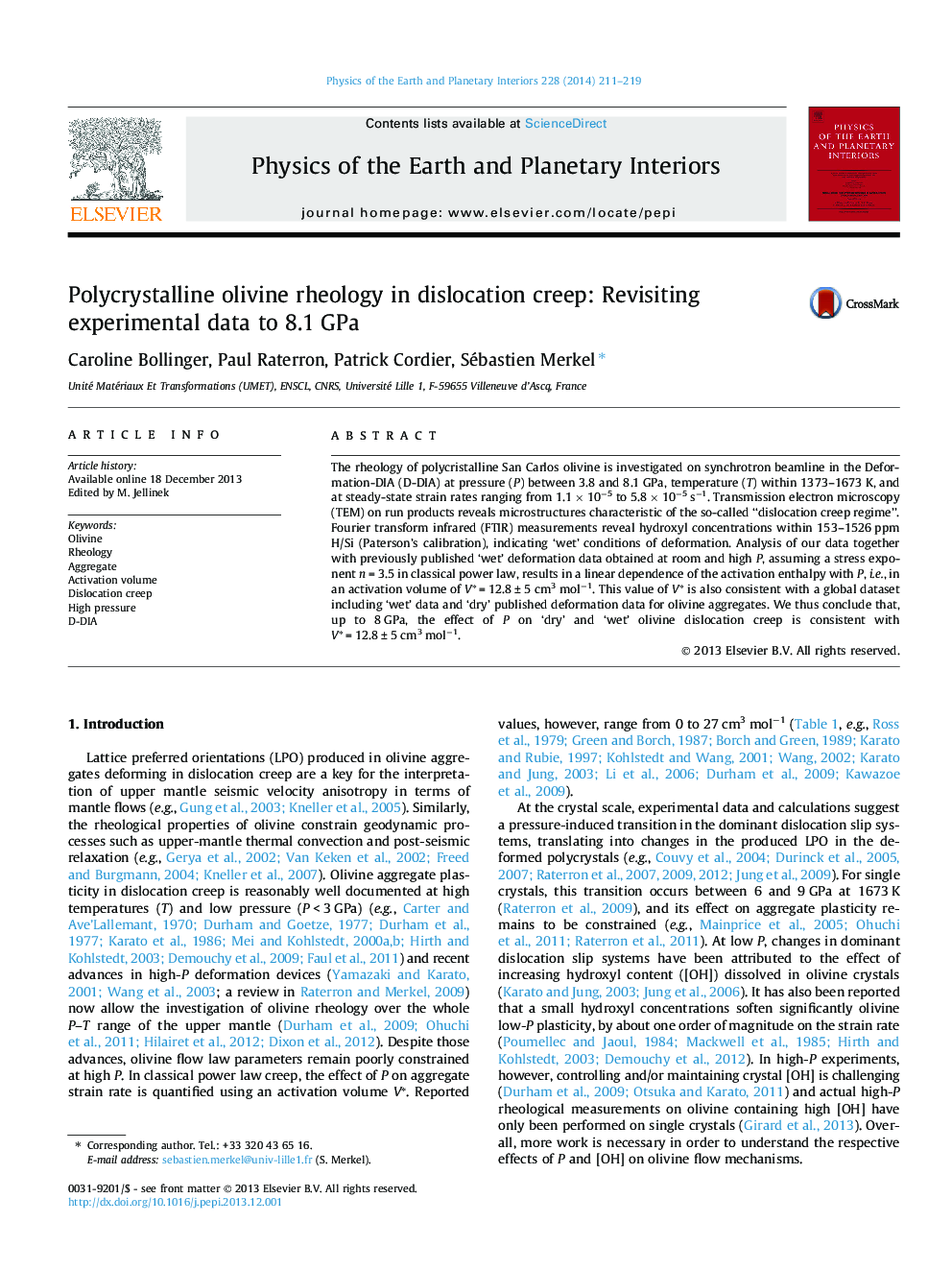| Article ID | Journal | Published Year | Pages | File Type |
|---|---|---|---|---|
| 4741594 | Physics of the Earth and Planetary Interiors | 2014 | 9 Pages |
•Activation enthalpy for olivine polycrystals rheology increases linearly with P.•For olivine polycrystals up to 8.1 GPa, V∗ = 12.8 +/− 5 cm3 mol−1.•Deformation data for ‘dry’ and ‘wet’ aggregates show the same pressure sensitivity.
The rheology of polycristalline San Carlos olivine is investigated on synchrotron beamline in the Deformation-DIA (D-DIA) at pressure (P) between 3.8 and 8.1 GPa, temperature (T) within 1373–1673 K, and at steady-state strain rates ranging from 1.1 × 10−5 to 5.8 × 10−5 s−1. Transmission electron microscopy (TEM) on run products reveals microstructures characteristic of the so-called “dislocation creep regime”. Fourier transform infrared (FTIR) measurements reveal hydroxyl concentrations within 153–1526 ppm H/Si (Paterson’s calibration), indicating ‘wet’ conditions of deformation. Analysis of our data together with previously published ‘wet’ deformation data obtained at room and high P, assuming a stress exponent n = 3.5 in classical power law, results in a linear dependence of the activation enthalpy with P, i.e., in an activation volume of V∗ = 12.8 ± 5 cm3 mol−1. This value of V∗ is also consistent with a global dataset including ‘wet’ data and ‘dry’ published deformation data for olivine aggregates. We thus conclude that, up to 8 GPa, the effect of P on ‘dry’ and ‘wet’ olivine dislocation creep is consistent with V∗ = 12.8 ± 5 cm3 mol−1.
